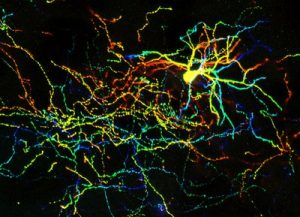An antenna-like structure on cells, once considered a useless vestige, appears to be important for proper brain development in mammals and when impaired can cause defects in the brain’s wiring similar to what’s seen in autism, schizophrenia, and other neuropsychiatric disorders. In lab experiments, UNC School of Medicine scientists prevented these wiring defects by restoring signaling though these antenna-like structures called primary cilia.
The study was published on August 7, 2017 in Developmental Cell.

The other co-authors of the study were UNC postdoctoral researcher James M. Otis, PhD; Holden Higginbotham, PhD, former postdoc in the Anton lab and now assistant professor of biology at Brigham Young University; former UNC undergraduate assistant Chase Monckton, Jr., now a graduate student at the University of Chicago; Gang Cheng, PhD, molecular core facility director at the UNC Neuroscience Center; Aravind Asokan, PhD, associate professor of genetics at UNC; Kirk Mykytyn, PhD, associate professor of biological chemistry and pharmacology at Ohio State University; Tamara Caspary, PhD, associate professor of genetics at Emory University; and Garret D. Stuber, PhD, associate professor of psychiatry and cell biology and physiology in the UNC Neuroscience Center.
National Institutes of Health funded this work, grant numbers NS090029 and MH060929.
To read the full UNC news article, click here.
To read the article in Developmental Cell, click here.
For additional information on this publication, click here.